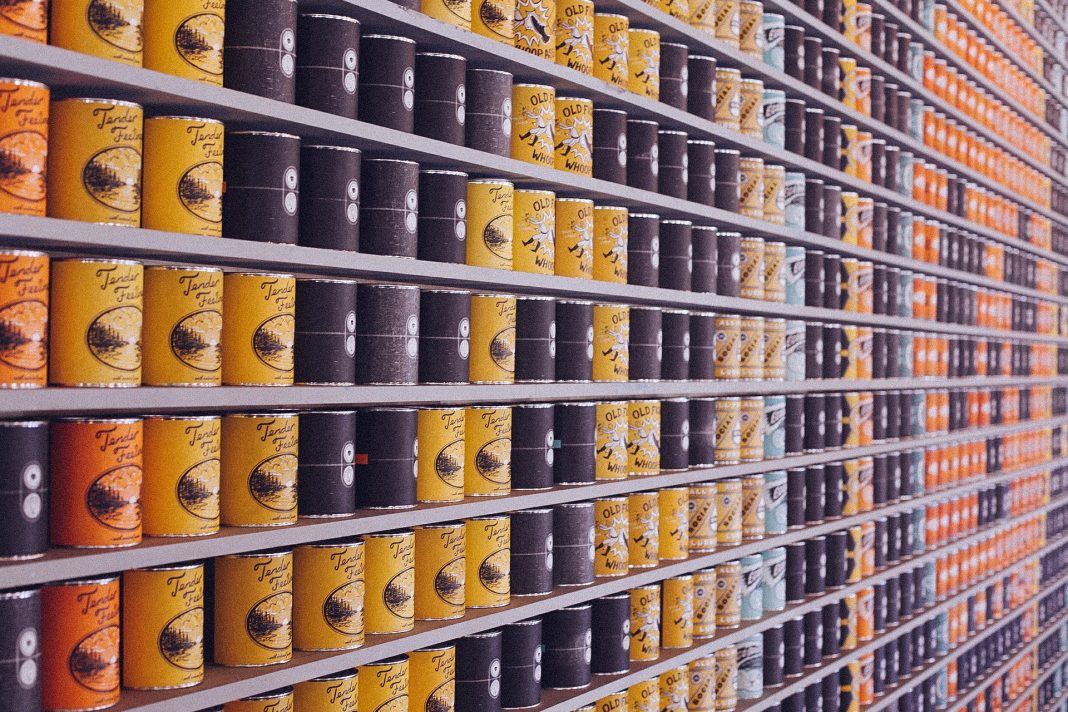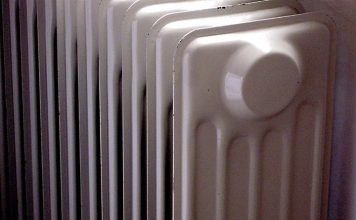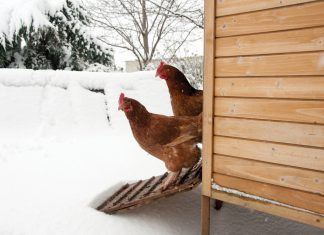 |
|
| Issue #140 • March/April, 2013 |
In parts one and two (Issues #138 and #139), we covered basics and homemade convenience foods. Now that you’ve become so proficient at making delicious, nutritious, and economical foods for your family, how in the world are you going to store it all? How will you keep it from losing quality and going bad?
I do this by making frequent use of my FoodSaver® vacuum sealer. It’s my BFF best friend forever when it comes to food storage.
We got ours years ago. Since then they’ve made many improvements, but the model we have does the job very well. If you can find one at a yard sale or on Craigslist, you can set yourself up to deal with every type of food storage need.
The customary way to use the vacuum sealer is to buy foods in bulk, then divide them into smaller portions for storage in the freezer. You can also vacuum seal cooked foods and pull them out later for reheating. All you need for this purpose is a roll of vacuum sealer bags and you’re good to go.
What opened my eyes to the wider food storage possibilities of the vacuum sealer was learning about canning jar sealers. These little gadgets let you put food in ordinary canning jars and completely remove the air. You can create a vacuum-sealed jar right in your own home!

Warning! Vacuum sealing jars does not take the place of proper canning methods! The vacuum sealer has a specific purpose and place in the kitchen. When used appropriately, it will make your food storage efficient, useful, and even attractive. But don’t try to use it to cut corners on food preservation. “Sorry” doesn’t begin to express how you’ll feel if you discover that your diligence and hard-earned money have been wasted on food that went bad from not being canned properly, or from seeing friends and loved ones become sick from eating foods you thought would nourish them.
Let me give you an example of how vacuum-sealed canning jars can work for you. My homemade convenience mixes go into various canning jars, with the ingredients list and instructions for use right on the jars. These are relatively shelf-stable and require no extra work. No vacuum sealing for them.
But here’s where the jar sealer makes itself indispensable as a frugal meal tool: You can prepare a week’s worth of perishable salads, soups, and healthy snacks, prepare them at home in one session, place them in canning jars, then vacuum seal them for storage. Into the refrigerator they go.
For instance, I make complete salads and put everything in one jar: dressing first, then various veggies and other salad toppings (cherry tomatoes, onion slivers, bits of celery, cheese, etc.), then lettuce on top. This way the greens are separated from the dressing and remain crisp. I also vacuum seal fresh fruit and veggie crudités, so when my daughter Ella opens the fridge and sees all the pretty jars of pretty food, it’s an easy choice for her to pick something healthy rather than a cookie or a bag of chips.
But there’s more to this story: By using the jar sealer to store perishables, I can extend their freshness by more than double. A head of ordinary lettuce can last up to two weeks when chopped and vacuum sealed in a jar, with no loss of quality. Cheese can go months and still look, feel, and taste new. Even cooked foods keep longer when sealed in a jar, and that lets me use them in dishes up to a week later, making it feel like we’re not eating the same meal over and over.
There are some things I don’t vacuum seal. Items that get opened more than a few times a week just get regular lids or go into ziplock bags. It’s easier that way, because they get used up well before they would go bad anyway.
Also, some things just do better without being sealed up tight for example, bread crumbs, which I keep in a jar that has a muffin paper liner instead of a regular lid. After all, I want my breadcrumbs to stay stale.
Tips:
When sealing things in bags for the freezer, it is sometimes better to cut a much larger bag than needed. If I know I’ll only use a small portion of something, I’ll usually just put it into one big bag which then gets opened and resealed as things get used up. This saves on the number of bags I store and saves money on bags too. (Every time you open a bag, you have to cut off the part at the top where the old seal is, thus making the bag smaller. If you start with a bag that is already the right size for a serving, once you open it, it might be too small to use again for anything but scraps. But if you start with a bigger bag, you can keep closing it, losing only the little bit at the top that you cut off when you opened it.
Dehydrated foods will last nearly forever in a vacuum-sealed container. Put crushable dehydrated foods in jars, and non-crushables in bags. You don’t have to freeze them, just put them on the shelf and admire your handiwork.
Oh yes label everything! There are few things more demoralizing than the discovery that you used cream of something soup mix to make pancakes. I put the ingredient list right on the jar if it is big enough, and sometimes the instructions too.
When canning, you must use a new, unused lid for each jar, but when using the vacuum sealer with canning jars for meal storage you can use the same lid over and over. This is what I do with lids that have been removed from previously canned foods. When I get the time, energy, and materials to do it, I’m going to paint my lids with red chalkboard paint so I can use them as labels, too!
Extreme meal planning
Okay, maybe all this food drying, canning, and sealing is not for you. Maybe you just want some simple, painless, non-time-consuming ways to feed your family well and make your groceries go as far as they can. I get that, and in fact I lived that when I was still working outside the home.
But don’t be fooled by finance guy Dave Ramsey’s schtick about eating “beans and rice, rice and beans” to save money. Frugality doesn’t mean doing without. It means using what you have well, so that what you have is enough. And you can do that right now, with very little effort.
There are several ways you can go about this. One is the planned-leftover method, which essentially means making a little more than needed for each meal and setting some of it aside for lunch the next day. I do this, and to make this more effective I load the lunch containers before serving the meal so that the needed portions are accounted for.
The next step along this continuum is what TV cook Sandra Lee calls “Round 2 Recipes.” This means setting aside some of the ingredients while you are preparing your meal and using them for a different recipe the next day. I do this sometimes too. In fact, I even do this in reverse when I’m canning (setting aside some of the food I’m prepping for jars to use for that day’s meal).
But the level I’m going to encourage you to shoot for is the one in which every morsel left in the pan at the end of a meal and every dab left at the bottom of a can and every drip at the end of a jar is assessed for its potential to become part of a new dish in a new meal. This is not as hard as it sounds; it just takes a little practice. To get you started, here are some of my favorite tips for turning what might be considered waste into nutritious, healthy, fun dishes and meals.
General ideas:
Set a jar or other container in the fridge and put in it any little bit of leftover veggies and cold meat the last few olives in the jar, that half a boiled egg that you forgot to put in the lunch box, etc. When you have enough, chop them all up, mix with some vinaigrette and serve in a lettuce wrap (mix with a little mayo and some lemon juice and serve in a pita or mix with some salsa and serve rolled up in a tortilla).
Combine leftover rice or that one last corn muffin, some leftover chopped meat, that last bit of onion or garlic, some herbs and seasoning, then stuff them in a hollowed-out tomato, sweet pepper (or heck, even a hot pepper if you like!), squash, zucchini, or eggplant. Then stand them in water or stock in a pan and heat in the oven until browned on top.
Croquettes can be made from just about anything. If you have meat or chicken or fish, chop it finely, add herbs and seasoning, an egg, and enough breadcrumbs/leftover rice/unsweetened cereal/plain oatmeal to hold it all together. Form into small patties, heat in a pan until browned, and serve with a sauce: gravy or tomato sauce/ketchup for meat, white sauce for chicken, soy sauce for fish. Offer them on a platter with some tartar or cucumber sauce and you have a fabulous brunch entrée!
Save leftover bits of fruit together in a jar in the fridge and when you have enough, make a fruit pot pie. You might not even need to add sugar just thicken any juices with a little cornstarch on the stove, pour the whole thing into a prepared pie crust and bake. Or if you prefer, mix some crumbled graham crackers with a little butter and press them into the bottom of a pan, pour the fruit and thickened juice on top, and chill for a delicious mixed fruit tart.
This and that:
When you finish a jar of pickles, slice up some veggies and put them in the jar with the juice overnight instant refrigerator pickled veggies!
You can also use the pickle juice to make a delicious salad dressing. Just mix three parts oil to one part pickle juice. Add a little sugar if it’s too tart for your taste.
Stale cheese the stuff that has gotten hard around the edges can be grated and stored in a jar. Mix it with breadcrumbs to make a tasty casserole topping or sprinkle it on crackers and pop them in the oven to make an easy snack.
Speaking of breadcrumbs save any piece of bread that’s going stale, toast it, and crumble it into a jar. You can add Italian seasoning mix to make your own seasoned breadcrumbs. Mixing different breads makes a wonderful crumb that has more depth of flavor.
Save the juice from a can of stewed tomatoes to use for flavoring soups, stews, or stocks.
The same goes for the last tablespoon of mashed potatoes, which can be used to thicken a gravy or to make the sauce in the crock pot.
Don’t slice a citrus fruit if you don’t need an actual slice. Just poke a hole in the side to squeeze out some juice, then plug the hole with a piece of a toothpick. Save the slicing for when you really need the fruit.
I could go on, but there are so many great resources available elsewhere that I’ll put some of my favorite links in a sidebar.
Food security

Using substitutes such as corn syrup and vegetable shortening, home economist Ida Lansden shows a group of Alexandria, Virginia, women how to bake the most succulent of sugarless, butterless cakes. (Source: Library of Congress)
Food security means different things to different people. Some think of it as having enough to eat. Some feel it’s knowing their food is of a certain level of quality. Some think of it as always being able to acquire food when they need it.
For me, it’s knowing that we are prepared for many different situations loss of work, loss of electricity, zombie apocalypse, whatever. It means making sure that every penny of our food budget goes as far as it can that I honor the hard work my husband, Rudi, does to provide for our family by protecting the resources we have and using them to their fullest. This gives me peace of mind and self-confidence that helps me not panic when things get scary.
With that in mind, here are a few more tips that work for me:
Don’t put all your eggs in one basket (or your squash, or your plums, or your beef stew). Having half an acre of veggies processed and in the freezer will not do you much good if the power goes out and all your food goes bad. Nor would your food security be enhanced by discovering that you had a canning failure on 20 pounds of beef.
This is why I recommend that you take the time to buy or preserve your foods in a variety of states, if possible. Freeze some uncooked, some prepared. Can some, dehydrate some. Store some as full meals and some as separate ingredients. Yes, it’s more work, but it also grants peace of mind, not to mention the convenience of having a wider array of options available when planning and preparing meals.
Meat is a specialty item. I don’t dehydrate meats for food storage because they don’t last as long as meats that are properly canned or frozen. It’s the fat that even very lean meat has to make it go rancid over time. At most, good home dehydrated jerky will last a few weeks without freezing. However, it does make a tasty, nutritious, lightweight food to carry for camping or a road trip, so I try to plan ahead and have some on hand for short-term needs.
It doesn’t have to be all or nothing. The main reason people choose to put up big lots of a given food at one time is that it’s more efficient. After all, if you’re chopping vegetables and filling jars, chopping and filling a little more only takes a little more time because you’re already set up for it. But small-batch preserving might be right up your alley, not to mention that having a few jars of this and that is a great way to start building up a good pantry.
It doesn’t have to be all at once. Maybe the idea of big-scale preserving does appeal to you. Don’t go overboard and burn out! Choose one thing, do that, repeat. You’ll get into a groove and before you know it, you’ll be looking for more places to stash your treasure.
The main thing is that you can take steps to make your family’s menus inviting, delicious, and healthy. You can save money doing it. And you can find great satisfaction in it. I do, and you will too. Just start and you might be amazed at what you achieve.
Left Overs: How to Transform Them into Palatable and Wholesome Dishes
By Mrs. S. T. Rorer, 1898. This is the book that got me started down this road. Mrs. Rorer was a very practical woman with plenty of advice on the subject, and I’ve learned something useful in all her books, even the one on chafing dishes.
Foods That Will Win the War and How to Cook Them
By Goodies and Goudiss, 1918. Nobody does food like people under fire.
That’s Not Trash, That’s Dinner!
A New York Times article for those who want a few modern-day examples of using absolutely everything.
Rowena Aldridge is a former professional ballerina who now spends her days homeschooling and homemaking. She is a certified educator in a number of old-school domestic skills, but her real passion is empowering others to go out and conquer the world on their own terms.
Learn more about her classes and other projects at www.romesticity.com.
(Read part one of this series in issue #138, November/December 2012 and part two in issue #139, January/February 2013.)















Thank you for all the good information and tips. I have read a lot about canning and storing, and I still learned something from this.
Many Blessings to you,
TJB